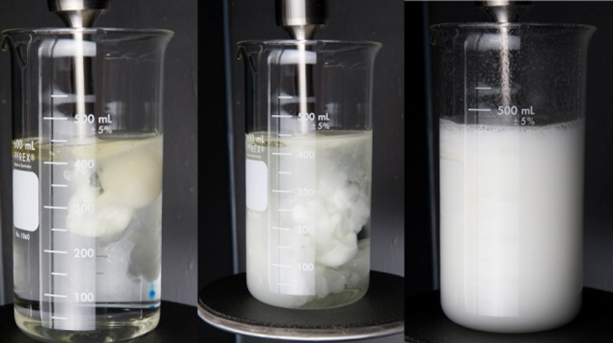There are some factors than affect the process of probe sonicator/ultrasonic processor
1. Aqueous Samples vs. Solvents
For aqueous samples, a replaceable tip probe is recommended as these probes have threaded ends and can be easily replaced when the tip is worn out. When sonicating a solvent-based solution, the liquid tends to enter into this threaded tip. Presence of liquid inside the tip will overload the sonicator or display an error message.
When processing low surface tension liquids, like acetone and acetone, or a sample containing solvents, a solid tip probe should be used. However, when the tip fails to sonicate effectively, the probe must be replaced.

2. Shape and Size of Vessel
The ultrasonic energy is produced from the tip and is directed downward. When a sample is being processed, the liquid is pushed in all directions. In case the vessel is too wide, it will not mix properly and some amount of sample will remain untreated.
On the other hand, when the vessel is narrow the time taken to process the sample is reduced significantly. Therefore, a narrow vessel is generally preferred to a wide vessel.
3. Foaming
Foaming usually occurs with sample volumes of less than 1 ml. Two issues can cause foaming: either the tip is not immersed deep enough or the amplitude setting is too high. Certain samples foam quite easily, but a Cup horn will not produce foam.
Another important issue is the depth of the probe within the sample vessel. In case the probe is very close to the liquid’s surface, it will produce foam. Likewise, if the probe is too deep, it may sonicate against the vessel’s bottom and will not process the sample effectively. For effective mixing, the sample must flow freely beneath the tip.
In addition, prior to processing the samples, the probe must be tested in a vessel filled with water to observe the flow pattern of the liquid and also the ultrasonic energy. During this test, the probe’s depth can be adjusted until sufficient mixing and movement of the water is seen.
4. Amplitude vs. intensity
Amplitude and intensity have a direct relationship. When users operate at a low amplitude setting, they will deliver low intensity sonication and vice versa.
In order to reproduce results, parameters such as amplitude setting, viscosity, temperature, and sample volume should remain consistent. Amplitude is the most important factor when reproducing sonication results.

See more details about BuenoBiotech Probe Sonicator
